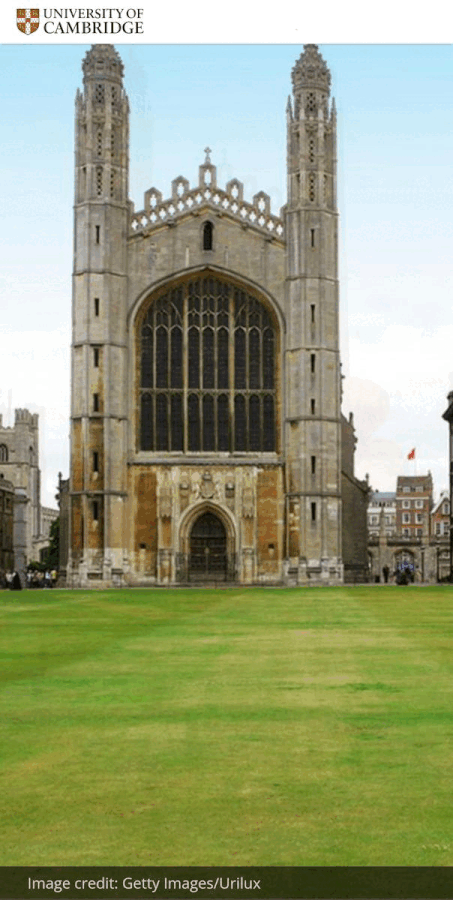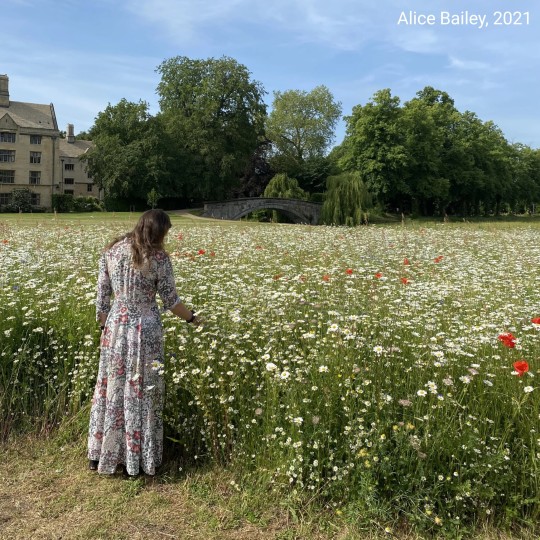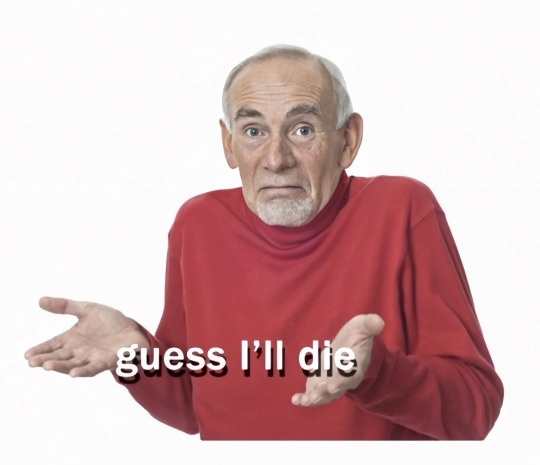#Environmental news
Explore tagged Tumblr posts
Text
youtube
Watch the 2024 American Climate Leadership Awards for High School Students now: https://youtu.be/5C-bb9PoRLc
The recording is now available on ecoAmerica's YouTube channel for viewers to be inspired by student climate leaders! Join Aishah-Nyeta Brown & Jerome Foster II and be inspired by student climate leaders as we recognize the High School Student finalists. Watch now to find out which student received the $25,000 grand prize and top recognition!
#ACLA24#ACLA24HighSchoolStudents#youtube#youtube video#climate leaders#climate solutions#climate action#climate and environment#climate#climate change#climate and health#climate blog#climate justice#climate news#weather and climate#environmental news#environment#environmental awareness#environment and health#environmental#environmental issues#environmental education#environmental justice#environmental protection#environmental health#high school students#high school#youth#youth of america#school
23K notes
·
View notes
Text
As relentless rains pounded LA, the city’s “sponge” infrastructure helped gather 8.6 billion gallons of water—enough to sustain over 100,000 households for a year.
Earlier this month, the future fell on Los Angeles. A long band of moisture in the sky, known as an atmospheric river, dumped 9 inches of rain on the city over three days—over half of what the city typically gets in a year. It’s the kind of extreme rainfall that’ll get ever more extreme as the planet warms.
The city’s water managers, though, were ready and waiting. Like other urban areas around the world, in recent years LA has been transforming into a “sponge city,” replacing impermeable surfaces, like concrete, with permeable ones, like dirt and plants. It has also built out “spreading grounds,” where water accumulates and soaks into the earth.
With traditional dams and all that newfangled spongy infrastructure, between February 4 and 7 the metropolis captured 8.6 billion gallons of stormwater, enough to provide water to 106,000 households for a year. For the rainy season in total, LA has accumulated 14.7 billion gallons.
Long reliant on snowmelt and river water piped in from afar, LA is on a quest to produce as much water as it can locally. “There's going to be a lot more rain and a lot less snow, which is going to alter the way we capture snowmelt and the aqueduct water,” says Art Castro, manager of watershed management at the Los Angeles Department of Water and Power. “Dams and spreading grounds are the workhorses of local stormwater capture for either flood protection or water supply.”
Centuries of urban-planning dogma dictates using gutters, sewers, and other infrastructure to funnel rainwater out of a metropolis as quickly as possible to prevent flooding. Given the increasingly catastrophic urban flooding seen around the world, though, that clearly isn’t working anymore, so now planners are finding clever ways to capture stormwater, treating it as an asset instead of a liability. “The problem of urban hydrology is caused by a thousand small cuts,” says Michael Kiparsky, director of the Wheeler Water Institute at UC Berkeley. “No one driveway or roof in and of itself causes massive alteration of the hydrologic cycle. But combine millions of them in one area and it does. Maybe we can solve that problem with a thousand Band-Aids.”
Or in this case, sponges. The trick to making a city more absorbent is to add more gardens and other green spaces that allow water to percolate into underlying aquifers—porous subterranean materials that can hold water—which a city can then draw from in times of need. Engineers are also greening up medians and roadside areas to soak up the water that’d normally rush off streets, into sewers, and eventually out to sea...
To exploit all that free water falling from the sky, the LADWP has carved out big patches of brown in the concrete jungle. Stormwater is piped into these spreading grounds and accumulates in dirt basins. That allows it to slowly soak into the underlying aquifer, which acts as a sort of natural underground tank that can hold 28 billion gallons of water.
During a storm, the city is also gathering water in dams, some of which it diverts into the spreading grounds. “After the storm comes by, and it's a bright sunny day, you’ll still see water being released into a channel and diverted into the spreading grounds,” says Castro. That way, water moves from a reservoir where it’s exposed to sunlight and evaporation, into an aquifer where it’s banked safely underground.
On a smaller scale, LADWP has been experimenting with turning parks into mini spreading grounds, diverting stormwater there to soak into subterranean cisterns or chambers. It’s also deploying green spaces along roadways, which have the additional benefit of mitigating flooding in a neighborhood: The less concrete and the more dirt and plants, the more the built environment can soak up stormwater like the actual environment naturally does.
As an added benefit, deploying more of these green spaces, along with urban gardens, improves the mental health of residents. Plants here also “sweat,” cooling the area and beating back the urban heat island effect—the tendency for concrete to absorb solar energy and slowly release it at night. By reducing summer temperatures, you improve the physical health of residents. “The more trees, the more shade, the less heat island effect,” says Castro. “Sometimes when it’s 90 degrees in the middle of summer, it could get up to 110 underneath a bus stop.”
LA’s far from alone in going spongy. Pittsburgh is also deploying more rain gardens, and where they absolutely must have a hard surface—sidewalks, parking lots, etc.—they’re using special concrete bricks that allow water to seep through. And a growing number of municipalities are scrutinizing properties and charging owners fees if they have excessive impermeable surfaces like pavement, thus incentivizing the switch to permeable surfaces like plots of native plants or urban gardens for producing more food locally.
So the old way of stormwater management isn’t just increasingly dangerous and ineffective as the planet warms and storms get more intense—it stands in the way of a more beautiful, less sweltering, more sustainable urban landscape. LA, of all places, is showing the world there’s a better way.
-via Wired, February 19, 2024
#california#los angeles#water#rainfall#extreme weather#rain#atmospheric science#meteorology#infrastructure#green infrastructure#climate change#climate action#climate resilient#climate emergency#urban#urban landscape#flooding#flood warning#natural disasters#environmental news#climate news#good news#hope#solarpunk#hopepunk#ecopunk#sustainability#urban planning#city planning#urbanism
14K notes
·
View notes
Text
In 2020, for the first time since being laid in 1772, a section of a King’s College lawn the size of just half a football pitch was not mown. Instead, it was transformed into a colourful wildflower meadow filled with poppies, cornflowers and oxeye daisies.

[Researcher Dr Cicely Marshall] found that as well as being a glorious sight, the meadow had boosted biodiversity and was more resilient than lawn to our changing climate. The results are published today in the journal Ecological Solutions and Evidence. Despite its size, the wildflower meadow supported three times more species of plants, spiders and bugs than the remaining lawn - including 14 species with conservation designations, compared with six in the lawn.

The meadow was found to have another climate benefit: it reflected 25% more sunlight than the lawn, helping to counteract what’s known as the ‘urban heat island’ effect. Cities tend to heat up more than rural areas, so reflecting more sunlight can have a cooling effect - useful in our increasingly hot summers. “Cambridge has become more prone to drought, and last summer most of the College’s fine lawns died. It’s really expensive to maintain these lawns, which have to be re-sown if they die off. But the meadow just looked after itself,” says Marshall.
#Down With Lawns#the article has a bunch more including tips on starting your own meadow#environmental news
11K notes
·
View notes
Text
"Starting this month [June 2024], thousands of young people will begin doing climate-related work around the West as part of a new service-based federal jobs program, the American Climate Corps, or ACC. The jobs they do will vary, from wildland firefighters and “lawn busters” to urban farm fellows and traditional ecological knowledge stewards. Some will work on food security or energy conservation in cities, while others will tackle invasive species and stream restoration on public land.
The Climate Corps was modeled on Franklin D. Roosevelt’s Civilian Conservation Corps, with the goal of eventually creating tens of thousands of jobs while simultaneously addressing the impacts of climate change.
Applications were released on Earth Day, and Maggie Thomas, President Joe Biden’s special assistant on climate, told High Country News that the program’s website has already had hundreds of thousands of views. Since its launch, nearly 250 jobs across the West have been posted, accounting for more than half of all the listed ACC positions.
“Obviously, the West is facing tremendous impacts of climate change,” Thomas said. “It’s changing faster than many other parts of the country. If you look at wildfire, if you look at extreme heat, there are so many impacts. I think that there’s a huge role for the American Climate Corps to be tackling those crises.”
Most of the current positions are staffed through state or nonprofit entities, such as the Montana Conservation Corps or Great Basin Institute, many of which work in partnership with federal agencies that manage public lands across the West. In New Mexico, for example, members of Conservation Legacy’s Ecological Monitoring Crew will help the Bureau of Land Management collect soil and vegetation data. In Oregon, young people will join the U.S. Department of Agriculture, working in firefighting, fuel reduction and timber management in national forests.
New jobs are being added regularly. Deadlines for summer positions have largely passed, but new postings for hundreds more positions are due later this year or on a rolling basis, such as the Working Lands Program, which is focused on “climate-smart agriculture.” ...
On the ACC website, applicants can sort jobs by state, work environment and focus area, such as “Indigenous knowledge reclamation” or “food waste reduction.” Job descriptions include an hourly pay equivalent — some corps jobs pay weekly or term-based stipends instead of an hourly wage — and benefits. The site is fairly user-friendly, in part owing to suggestions made by the young people who participated in the ACC listening sessions earlier this year...
The sessions helped determine other priorities as well, Thomas said, including creating good-paying jobs that could lead to long-term careers, as well as alignment with the president’s Justice40 initiative, which mandates that at least 40% of federal climate funds must go to marginalized communities that are disproportionately impacted by climate change and pollution.
High Country News found that 30% of jobs listed across the West have explicit justice and equity language, from affordable housing in low-income communities to Indigenous knowledge and cultural reclamation for Native youth...
While the administration aims for all positions to pay at least $15 an hour, the lowest-paid position in the West is currently listed at $11 an hour. Benefits also vary widely, though most include an education benefit, and, in some cases, health care, child care and housing.
All corps members will have access to pre-apprenticeship curriculum through the North America’s Building Trades Union. Matthew Mayers, director of the Green Workers Alliance, called this an important step for young people who want to pursue union jobs in renewable energy. Some members will also be eligible for the federal pathways program, which was recently expanded to increase opportunities for permanent positions in the federal government...
“To think that there will be young people in every community across the country working on climate solutions and really being equipped with the tools they need to succeed in the workforce of the future,” Thomas said, “to me, that is going to be an incredible thing to see.”"
-via High Country News, June 6, 2024
--
Note: You can browse Climate Corps job postings here, on the Climate Corps website. There are currently 314 jobs posted at time of writing!
Also, it says the goal is to pay at least $15 an hour for all jobs (not 100% meeting that goal rn), but lots of postings pay higher than that, including some over $20/hour!!
#climate corps#climate change#climate activism#climate action#united states#us politics#biden#biden administration#democratic party#environment#environmental news#climate resilience#climate crisis#environmentalism#climate solutions#jobbs#climate news#job search#employment#americorps#good news#hope
1K notes
·
View notes
Text
They found underwater sea batteries that produce "dark oxygen" without sunlight and now there's a crisis because mining companies want to harvest them for their metals.
They take millions of years to form, and are likely essential for deep sea life, but they want to scrap them for spare materials.
And I cannot even think of a metaphor for how completely morally bankrupt this economic system is, because this is just par for the course.
137 notes
·
View notes
Text
youtube
Watch the American Climate Leadership Awards 2024 now: https://youtu.be/bWiW4Rp8vF0?feature=shared
The American Climate Leadership Awards 2024 broadcast recording is now available on ecoAmerica's YouTube channel for viewers to be inspired by active climate leaders. Watch to find out which finalist received the $50,000 grand prize! Hosted by Vanessa Hauc and featuring Bill McKibben and Katharine Hayhoe!
#ACLA24#ACLA24Leaders#youtube#youtube video#climate leaders#climate solutions#climate action#climate and environment#climate#climate change#climate and health#climate blog#climate justice#climate news#weather and climate#environmental news#environment#environmental awareness#environment and health#environmental#environmental issues#environmental justice#environment protection#environmental health#Youtube
23K notes
·
View notes
Text
"The European Court of Human Rights (ECtHR) has issued a landmark ruling, declaring that failure to address environmental pollution constitutes a violation of the right to life. The court found that governments must inform citizens living in pollution-affected areas, allowing them to assess risks to their health and well-being.
The case was brought by Italian citizens affected by hazardous emissions and widespread illegal waste dumping and burning in Campania. The pollution crisis has had severe public health consequences, and the court determined that the Italian government’s failure to intervene effectively, despite the pollution being caused by private actors, breached human rights law.
The ruling is expected to set a precedent for environmental cases across Europe, reinforcing government accountability in pollution control.
ClientEarth fundamental rights lawyer Malgorzata Kwiedacz-Palosz hailed the decision as a crucial step in linking environmental protection to human rights.
“This ruling confirms that human rights depend on access to clean air, water, and soil. Governments have an obligation to shield citizens from environmental hazards, no matter their source. The court has now explicitly recognised that pollution can directly threaten the right to life, meaning states will face greater scrutiny and stricter enforcement obligations,” she said.
Leading epidemiologist Dr Fabrizio Bianchi, who submitted expert testimony, stressed the severe health risks linked to pollution in Campania, where nearly three million residents have been exposed to toxic air since the 1980s.
“The health impacts are undeniable—higher rates of cancer, cardiovascular disease, and respiratory illnesses. Authorities must implement immediate clean-up measures and long-term monitoring to protect public health,” he stated.
This ruling strengthens environmental case law within the European Court of Human Rights, setting a binding precedent for future litigation.
In a separate legal challenge in Italy, ClientEarth is supporting a mother’s case advocating for her son’s right to breathe clean air, citing Article 2 of the European Convention on Human Rights —the same provision that underpinned the ECtHR’s latest decision.
Legal experts from Torino Respira, a group supporting the case in Italy, welcomed the ruling: “This judgment reinforces our argument that failing to keep air pollution within legal limits violates a child’s fundamental right to life and health. It sets an authoritative precedent for human rights protections against environmental harm.”
With growing global recognition of environmental degradation as a human rights issue, this ruling is expected to reshape legal approaches to pollution-related cases, compelling governments to act decisively against environmental threats."
-via ESG Post, February 1, 2025
#italy#europe#pollution#air pollution#human rights#environmental news#environmental issues#good news#hope
3K notes
·
View notes
Text


(article here but it has a paywall)
512 notes
·
View notes
Text
Instead of watching American Climate Leadership, watch me for free. And give yourself a good pleasure 🥵🥵
#ACLA23#YouTube#climate leaders#climate solutions#climate action#climate and environment#climate#climate and health#climate blog#climate change#climate activism#climate justice#climate news#weather and climate#environmental news#environment#environmental awareness#environmental activism#environmental justice#environmental#environment protection#environment and health#environmental health#cutie w a bootie
79 notes
·
View notes
Text

A group of scientists and policymakers have recommended the European Union support a Europe-wide moratorium on using a controversial geoengineering technique known as solar geoengineering.
Read More: https://thefreethoughtproject.com/environmental-news/eu-scientific-advisors-call-for-moratorium-on-solar-geoengineering-aerosol-injection
#TheFreeThoughtProject
#the free thought project#police the police#police state#tftp#war#environmental news#global governance
7 notes
·
View notes
Text
does anyone have any reliable news account recommendations on here? i'm from the US, for reference, but i don't want it to just be political news: i'd love environmental and other such topics as well.
i've recently realized how much i absolutely hate instagram and want to get off of it, but i get most of my news via accounts i follow there, so i want to try and slowly leech myself off of them.
so if anyone has recommendations, let me know!!!
6 notes
·
View notes
Text
This time-lapse was taken over 7 days with a GoPro. Genetics https://mushroomresercheshop.com/
#mycology#ACLA23#YouTube#climate leaders#climate solutions#climate action#climate and environment#climate#climate and health#climate blog#climate change#climate activism#climate justice#climate news#weather and climate#environmental news#environment#environmental awareness#environmental activism#environmental justice#environmental#environment protection#environment and health#environmental health#Youtube
24 notes
·
View notes
Text
Shining Stars: Unveiling the Most Stunning Celebrities Who Rule Our Hearts

In the realm of entertainment, there exist certain individuals who captivate our attention with their mesmerizing beauty, talent, and charisma. These enchanting celebrities have become an integral part of our lives, inspiring us with their remarkable performances and captivating us with their stunning looks. In this article, we will delve into the world of eight breathtakingly beautiful celebrities who have stolen our hearts and become our ultimate celebrity crushes.
#actress#celebrity#female celebrities#gorgeous#beautiful#ACLA24#ACLA24Leaders#youtube#youtube video#climate leaders#climate solutions#climate action#climate and environment#climate#climate change#climate and health#climate blog#climate justice#climate news#weather and climate#environmental news#environment#environmental awareness#environment and health#environmental#environmental issues#environmental justice#environment protection#environmental health#Youtube
11 notes
·
View notes
Text

May this International Labour Day bring you renewed energy and motivation to pursue your goals with passion and dedication.
#may day#labour day#ACLA24#ACLA24Leaders#youtube#youtube video#climate leaders#climate solutions#climate action#climate and environment#climate#climate change#climate and health#climate blog#climate justice#climate news#weather and climate#environmental news#environment#environmental awareness#environment and health#environmental#environmental issues#environmental justice#environment protection#environmental health#Youtube
7 notes
·
View notes
Text

Apply or nominate: https://ecoamerica.org/american-climate-leadership-awards-2025/
Calling all organizations, individuals, and small businesses successfully engaging Americans on climate! Showcase your creativity and climate solutions by applying for @ecoamerica’s 2025 American Climate Leadership Awards. You can win $1K - $50K by submitting your efforts for consideration by a stellar line-up of judges and individuals leading on climate. It’s quick and easy to submit your application or nominate inspirational climate leaders. Apply or nominate today!
#ACLA25#ACLA25Leaders#ACLA25Youth#climate leaders#climate solutions#climate action#climate and environment#climate#climate change#climate and health#climate blog#climate justice#climate and education#climate news#weather and climate#environmental news#environment#environmental awareness#environmental education#environment and health#environmental#environmental issues#environmental impact#environmental justice#environmental protection#environmental health#high school students#high school#youth#awards
17K notes
·
View notes
Text
"The coral reefs of south Sulawesi are some of the most diverse, colorful and vibrant in the world. At least, they used to be, until they were decimated by dynamite fishing in the 1990s.
As part of a team of coral reef ecologists based in Indonesia and the UK, we study the reefs around Pulau Bontosua, a small Indonesian island in south Sulawesi...
In many places around the world, damage like this might be described as irreparable. But at Pulau Bontosua, the story is different. Here, efforts by the Mars coral restoration program have brought back the coral and important ecosystem functions, as outlined by our new study, published in Current Biology. We found that within just four years, restored reefs grow at the same rate as nearby healthy reefs.
Speedy recovery
The transplanted corals grow remarkably quickly. Within a year, fragments have developed into proper colonies. After two years, they interlock branches with their neighbors. After just four years, they completely overgrow the reef star structures and restoration sites are barely distinguishable from nearby healthy reefs.
The combined growth of many corals generates a complex limestone (calcium carbonate) framework. This provides a habitat for marine life and protects nearby shorelines from storm damage by absorbing up to 97% of coastal wave energy.
We measured the overall growth of the reef framework by calculating its carbonate budget. That's the balance between limestone production (by calcifying corals and coralline algae) and erosion (by grazing sea urchins and fishes, for example). A healthy reef produces up to 20kg of reef structure per square meter per year, while a degraded reef is shrinking rather than growing as erosion exceeds limestone production. Therefore, overall reef growth gives an indication of reef health.
At Pulau Bontosua, our survey data shows that in the years following restoration, coral cover, coral colony sizes, and carbonate production rates tripled. Within four years, restored reefs were growing at the same speed as healthy reefs, and thereby provided the same important ecosystem functions...
Outcomes of any reef restoration project will depend on environmental conditions, natural coral larvae supply, restoration techniques and the effort invested in maintaining the project. This Indonesian project shows that when conditions are right and efforts are well placed, success is possible. Hopefully, this inspires further global efforts to restore functioning coral reefs and to recreate a climate in which they can thrive."
-via Phys.org, March 11, 2024
#coral#coral reef#marine life#marine biology#sea creatures#aquatic#environment#ecology#environmental news#environmental science#climate action#climate hope#ecosystem#conservation#endangered species#indonesia#sulawesi#good news#hope#overfishing#hopepunk#hope posting
6K notes
·
View notes